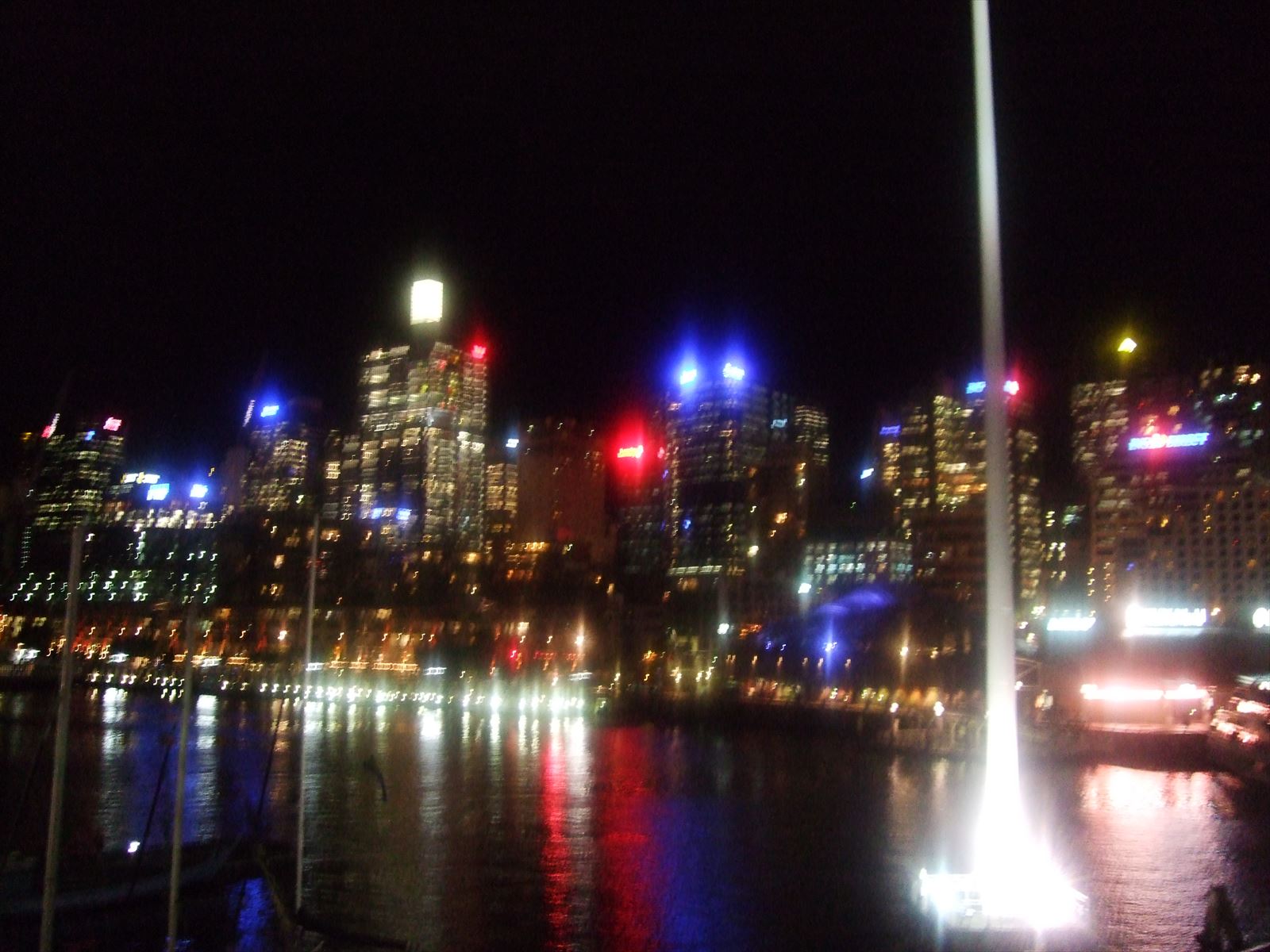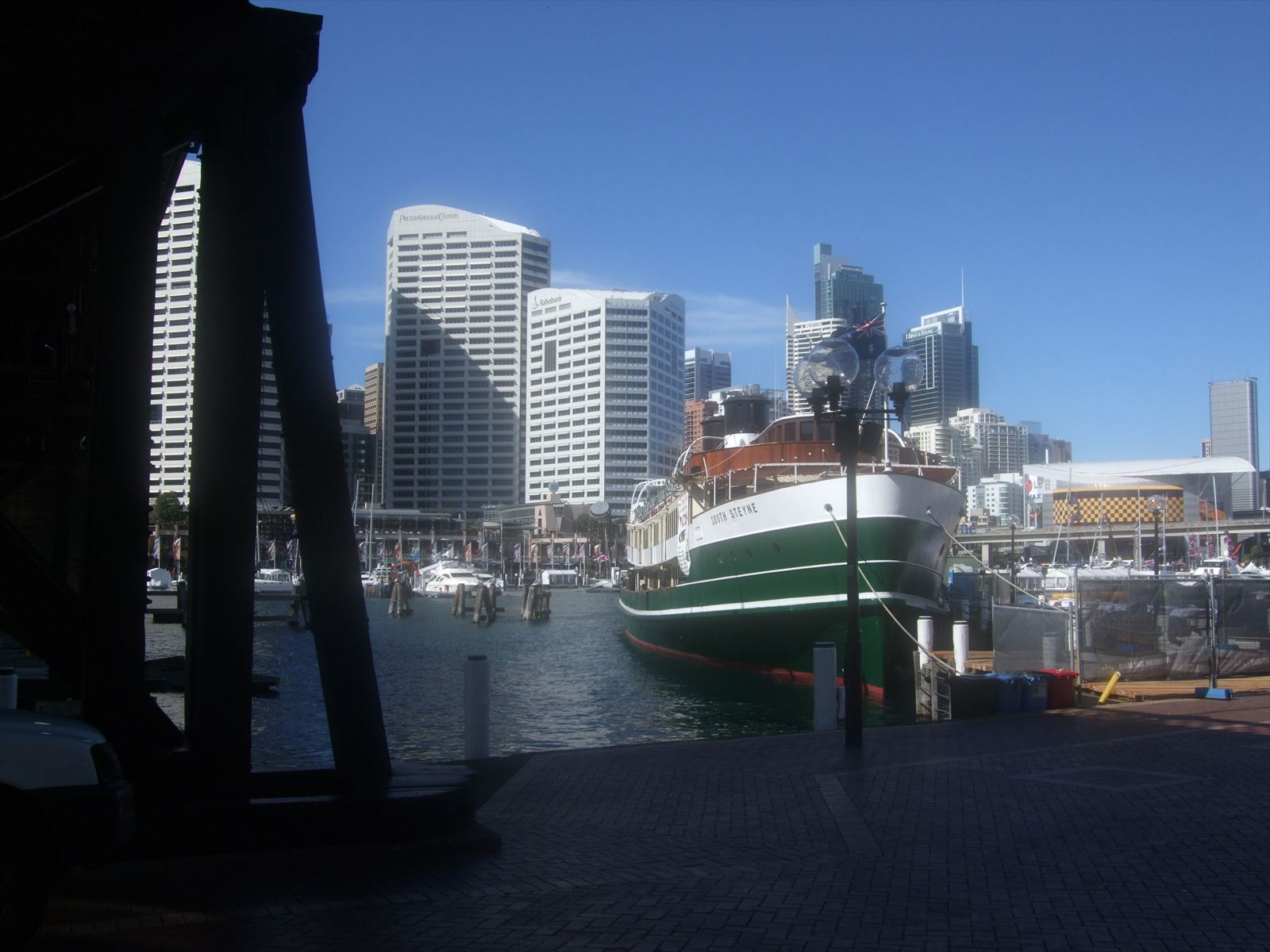キャプティブ 2020.03.05
CA 10 キャプティブに相応しい保険(取引信用保険)trade credit insurance
目次
Copyright © Shinichiro Hatani 2020 All rights reserved
For those who prefer to read this column in English, the Japanese text is followed by a British English translation, so please scroll down to the bottom of the Japanese text.
旅程: (往路)日本発:1999年8月21日(土)午後9時10分 成田空港発
豪州着:1999年8月22日(日)午前7時35分 シドニー国際空港着
(復路)豪州発:1999年8月26日(木)午前9時35分 シドニー国際空港発
日本着:1999年8月26日(木)午後6時30分 成田空港着
これは、財閥系生命保険会社から損害保険事業分野の経営コンサルティングを委嘱され、取引信用保険の商品開発のために、豪州の世界的保険会社との業務提携をおこなうため、その後10年間で合計20数回ほどになったが、豪州に初めて出張した際の旅程である。

1. 取引信用保険会社の起源と今
取引信用保険とは、「取引先の倒産や支払遅延等により、販売代金を回収できなくなった場合にその未回収代金の一定割合を販売主に補償する保険」である。
取引信用保険は、もともとは「海上保険、運送保険の追加補償」として、250年ほど前から英国のロイズ(Lloyd’s of London)を中心に、ごく限定された範囲で取引がおこなわれていたが、1820年、世界最初の「取引信用保険会社」が英国で設立されてからは、その需要の大きさからその後急速に発展していった保険である。
国内の商取引に関わる保険であるため、「取引信用保険」は「欧州を中心にした保険」と1970年代までは見られていた。しかし、その後の貿易受注競争の激化にともなって、当初は国内に限られていた「信用販売」が国際間においてもおこなわれるようになっっていった。
さらに、1980年代に入るとイラン革命等、多種多様なカントリー・リスクの発生も相まって、各国政府が輸出債権の保全策として、積極的に「国際間の取引信用保険=輸出保険(貿易保険)」に直接、もしくは再保険の提供という形で間接的に関与するようになり、輸出保険(貿易保険)制度が各国で整備、強化されていった。
このように、①「国内商取引のための取引信用保険」は民間保険会社によって引受けがおこなわれ、一方②「海外商取引、貿易に関する貿易保険」は政府管掌という形態が続いていたが、この併存状態に変化をもたらす大きなきっかけとなったことが起きた。1988年、EUは「EU域内のいずれの地に本店がある保険会社は、EU全域内すべてにおいて元受営業をおこなうことができる」という「損害保険に関する指令」を出したのである。
このことによって、「取引信用保険市場」は、すぐに大きな変化を起こすことになった。有力な信用保険会社による中小の信用保険会社の買収、合併が始まったのである。さらに、もう一つ大きな影響を与えることが起きた。1990年代初頭、英国で起きた政府管掌の輸出保険(貿易保険)が民営化される流れであり、それを受けた欧州各国の対応であった。
英国政府の「輸出保険機関」である、ECGD(Export Credit Guarantee Department:英国輸出信用保険局)は、代金支払いの決済期間が2年未満、いわゆる短期決済案件の保険プログラムをオランダ政府から貿易保険運営の委託を受けている、NCM(Netherlandsche Creditverzekering Maatschappij:オランダ輸出信用会社)に売却したのである。そして、英国政府ECGDは、「リスクの予測が困難であり、代金支払いの不確実性が高く、政府の関与が適当であろう」と考えられる、代金支払いまでの決済期間が2年超の長期案件のみを引き受ける体制へと変化したのである。
これらのことは、民間保険会社を「取引信用保険分野を戦略商品化する方向へ」と駆り立てる大きなきっかけとなった。こうして、英国の取引信用保険会社、TI(Trade Indemnity)と米国のACI(American Credit Indemnity)がEULER Group(ユーラー・グループ)を結成するなど、有力信用保険会社を中心に、保険会社の集約化の流れも生れたのである。この結果、国内取引信用保険分野では、各社が合併を繰り返し、NCM(エヌシーエム),COFACE(コファス)、ドイツの大手保険会社アリアンツ傘下のEuler Hermes(ユーラーヘルメス)、HDI-Gerling(ゲーリング)、などが凌ぎを削る状態となっていったのである。
これらの保険会社に加え、貿易保険分野を得意にしていた、AIG、ロイズ(Lloyd’s of London)、TI(Trade Indemnity)の豪州事業の譲渡を受けた豪州の世界的保険会社QBE、そして米国のHCCやChubb等、各国の大手損害保険会社が取引信用保険で激しい競合を繰り広げることになったのである。
日本のメガ損保も、これら海外の取引信用保険会社の買収や業務提携によって、アンダーライティング(保険引受)のノウハウを吸収して自らのものとしている。

2、取引信用保険の新たな活用法
リスクマネジメントは、企業を取り巻くリスクを洗い出し、分析・評価するとともに、これらのリスクを回避、移転、軽減、保有をおこなうことである。
グローバル・リンクでは、リスクマネジメントによる保険へのリスク移転の手法を一歩進めて、「キャプティブの設立」に依る「リスクの更なる見える化を図ること」を提案している。それほど、「企業の財務・信用リスクが見えにくくなっている状況」だからである。
昨年、2019年12月27日付日本経済新聞(朝刊)には;
中堅中小企業を中心に粉飾決算に起因する倒産が増えている。東京商工リサーチの調べでは、2019年1~11月の「粉飾倒産」は18件で、前年同期と比べて2倍に増えた。粉飾を長期間隠した後に発覚するケースも目立つという。本業ではなく事業承継が絡んだ事例もある。低金利を背景に低水準が続いてきた国内倒産件数が増加に転じる兆しとの見方もある。
とあった。
長期間の粉飾によって、粉飾の事実の解明が非常に困難なケースが多くなっていて、以前のような「単純な貸し倒れ、倒産」とは違う様相をみせている、その背景が記されていた。
このような状態では、取引信用保険の掛け方も「これまでの常識」に基づいた掛け方ではなく、「リスクが見えにくくなっている事態に対応する掛け方」へと、信用リスクへの視点を大きく二つに別けた保険の掛け方が必要になってくる。その二つとは、「通常の貸し倒れに対応する保険」と「(粉飾倒産によって)リスクが極大化すること(突然の倒産によって大きな貸し倒れが発生すること)に対応する保険」である。
一般的な保険は、保険を掛ける対象の金額である「保険金額」も、事故・損害が発生したときに、保険会社から支払われる保険金の限度を表す「てん補限度額」も、そして保険会社に支払う「保険料」も、これらすべては「一つの金額」で記される。
しかし、保険会社が「自らのリスクヘッジのために掛けている保険(=再保険)の掛け方」は、基本的に次の考え方に基づいて、リスクヘッジプログラム(=再保険プログラム)が構築されている。
Primary(プライマリー:「基本」)と、Surplus・Excess(サープラス・エクセス:「超過」)、この二つである。さらに、Primary、Surplus ・Excessのカテゴリーごとに、再保険先を再保険会社の得意・不得意な分野、また保険料率によって、いくつもの階層に分けて、保険プログラムを構築している。
「保険の専門企業である保険会社の再保険プログラム」の特長を活用することはリスクマネジメントに有用であることは論を待たないであろう。しかし、一般企業が、非常に多くのポートフォリオ(顧客層)を持ち巨大な保険料を得る保険会社と全く同じプログラムを構築する必要は無い。
少なくとも、2つの階層に別ければ、その「保険の掛け方のエッセンスを得ること」になる。Primary(基本部分)とSurplus・Excess(超過部分)の二つの階層に別け、保険金額やてん補限度額をそれぞれ別けて、「階層保険プログラム」を構築するのである。
その理由としては、Primary(基本部分)は保険事故が起きやすい、つまり「保険金額・てん補限度額の低層部」を構成する保険であり、Surplus・Excess(超過部分)は、「事故・損害の発生頻度は少ないが、一旦起きるとその損害の程度は大きい高層部」を構成する保険となる。このように2つに別けることによって、それぞれの保険プログラムの保険料を合算しても、「階層ごとの専門的な保険会社」が出す引受条件は、全体を1つの保険プログラムでカバーすることに比べて、保険料も条件も好条件となる可能性が高いのが特長である。
それをさらに進めて、事故・損害が起きやすい「低層部」は、保険会社に普通に保険を掛ける。そして、「高層部」はキャプティブからの再保険手配を十分におこなったキャプティブ・プログラムを構築すると、さらに条件的に良好になっていくのが普通である、だからこそ保険会社の再保険プログラムはそのようになっているのである。
つまり、「一旦起きるとその損害の程度は大きい部分」である、「CAT(カタストラフィック=大災害)リスク」と言われるリスクを専門に引受ける、「Surplus・Excess」保険会社が存在するおかげで、かえって保険料が好条件になることが一般的だからである。これこそ、保険会社が「リスクの専門会社」として、長年掛けて編み出してきたリスクマネジメントの手法であり、これを学ばない手は無いと考えるのである。
今回のまとめ
取引信用保険はキャプティブ・プログラムに馴染みやすい、非常に親和性のある保険であるが、さらに保険会社の専門知識を活用して、「保険プログラムを2つ以上に別けて、保険設計すること」によって、「Turning Risk to Profit®」(リスクの収益化)を実現させ、企業の利益にも大きく貢献できるプログラムになると考える保険である。
執筆・翻訳者:羽谷 信一郎
English Translation
Captive 10 – Appropriate Insurance for Captives (trade credit insurance)
Itinerary:
(Outward) Departure 9:10 p.m., Saturday, August 21, 1999, from Narita Airport, Japan
Arrival 7.35 a.m., Sunday, August 22 1999, at Sydney International Airport in Australia
(Inbound) Departure 9:35 a.m., Thursday, August 26, 1999, from Sydney International Airport, Australia
Arrival 6:30 p.m., Thursday, August 26, 1999 at Narita Airport in Japan
This was the itinerary of my first trip to Australia, which I made more than 20 times in total over the next 10 years, when I was commissioned by a conglomerate life insurance company to provide management consulting in the field of non-life insurance business, and to collaborate with a global insurance company in Australia to develop a trade credit insurance product.
1. The origins of trade credit insurance companies and now
Trade credit insurance is “insurance that compensates the seller for a percentage of the uncollected sales proceeds in the event that the seller is unable to collect the sales proceeds due to bankruptcy or late payment of the customer”.
Trade credit insurance was originally traded on a very limited basis, mainly at Lloyd’s of London in the UK, for about 250 years as “additional coverage for marine and carriage insurance”. But the demand for trade credit insurance was so great that it grew rapidly after the establishment of the world’s first trade credit insurance company in England in 1820.
Because it involved domestic commercial transactions, “trade credit insurance” was seen until the 1970s as a “European-focused insurance”. Later, however, as competition for trade orders intensified, credit sales, which were initially limited to the domestic market, began to be carried out internationally.
In the 1980s, with the Iranian Revolution and the emergence of various country risks, governments became actively involved in international trade credit insurance (export insurance), either directly or indirectly through the provision of reinsurance, and export insurance systems were developed and strengthened in many countries.
Thus, a major catalyst for a change in this coexistence occurred when (1) “trade credit insurance for domestic commerce” was underwritten by private insurance companies and (2) “trade insurance for overseas commerce and trade” was still under the control of the government.
In 1988, the EU issued a directive on non-life insurance, which states that “an insurance company with headquarters in any place within the EU may operate as a primary insurer throughout the EU”.
This immediately led to a sea change in the “trade credit insurance market”. The acquisition and merger of smaller credit insurers by the leading credit insurers began. Another major impact occurred in the early 1990s with the privatization of government-controlled export insurance (trade insurance) in the UK and the response of European countries to this trend.
The Export Credit Guarantee Department (ECGD), the U.K. government’s export insurance agency, has sold an insurance program for payment settlements of less than two years (so-called “short-term settlement cases”) to the NCM (Netherlandsche (Creditverzekering Maatschappij: Dutch Export Credit Company), which is contracted by the Dutch government to administer trade insurance. The UK government’s ECGD was then transformed into a system that only underwrites long term deals with a settlement period of more than two years where “risks are difficult to predict, payments are highly uncertain, and government involvement is likely to be appropriate”.
This was a major impetus for private insurers to “make the trade credit insurance sector a strategic product”. This is how Trade Indemnity (TI), a British trade credit insurer, and American Credit Indemnity (ACI) of the United States formed the EULER Group, which led to a consolidation of insurance companies, particularly the leading credit insurers. As a result, domestic credit insurance companies merged repeatedly, with NCM, COFACE, Euler Hermes, and HDI-Gerling, a member of the German insurance giant Allianz, among others, gaining ground.
In addition to these insurers, other major non-life insurers such as AIG, Lloyd’s of London, QBE, the global Australian insurer that took over Trade Indemnity’s (TI) Australian business, and US-based HCC and Chubb, which specialised in trade insurance, have all signed up for credit. This has led to fierce competition in insurance.
Japan’s mega non-life insurers are also absorbing underwriting know-how and making it their own through acquisitions and business partnerships with these overseas credit insurance companies.
2. New ways to use trade credit insurance
Risk management is the process of identifying, analyzing and evaluating risks surrounding a company, as well as avoiding, transferring, mitigating and retaining those risks.
Global Link takes risk management’s method of transferring risk to insurance one step further by proposing the establishment of a captive to further visualize risk. This is because “the financial and credit risks of companies are becoming less visible”.
Last year, on December 27, 2019, there were in the morning edition of the Nihon Keizai Shimbun;.
Bankruptcies caused by window-dressing are on the rise, especially for small and medium-sized companies. According to Tokyo Shoko Research, there were 18 “window dressing” bankruptcies in the January-November 2019 period, double the number of cases compared to the same period last year. There are also a number of cases where the window dressing was hidden for a long period of time before it was discovered, according to the report. Some of the cases involved business succession rather than the main business. After remaining at a low level due to low interest rates, the number of domestic bankruptcies is expected to increase.
The report explains that window dressing over a long period of time has made it increasingly difficult to uncover the facts about the window dressing, and that this is a different picture than the “simple loan defaults and bankruptcies” of the past.
In this situation, it is necessary to separate the credit risk perspective into two main categories: one based on conventional wisdom and the other based on a perspective that responds to a situation in which risk is difficult to see. The two types are “insurance for normal defaults” and “insurance for the maximization of risk (i.e., large defaults due to sudden bankruptcy)”.
In a general insurance policy, the “insurance amount”, which is the amount of money to be insured, the “coverage limit”, which is the limit of the amount of money to be paid by the insurance company in the event of an accident or damage, and the “insurance premium”, which is paid to the insurance company, are all written in “one amount”.
However, the risk hedging program (i.e., the reinsurance program) is basically structured according to the following concept, which is that insurance companies purchase insurance (i.e., reinsurance) to hedge their risks.
Primary (“Basic”) and Surplus/Excess. In addition, for each Primary and Surplus/Excess category, reinsurers are divided into several tiers according to their strengths and weaknesses and their premium rates.
It is arguably useful for risk management to take advantage of the features of the “reinsurance programs of specialist insurance companies”. However, it is not necessary for a company to build exactly the same program as an insurance company with a very large portfolio and huge premiums.
At the very least, it will “get the essence of how to insure” if you break it down into two tiers. The reason for this is to build a “tiered insurance program” by dividing the program into two tiers, Primary and Surplus/Excess, with different amounts of coverage and coverage limits.
The reason for this is that the Primary is the insurance program for the “low-rise part of the policy amount and coverage limit” that is prone to accidents, while the Surplus and Excess is the “high-rise part of the program” that is prone to fewer accidents and losses, but once they occur, the degree of damage is significant. By separating the two in this way, even when the premiums for each insurance program are added together, the underwriting terms and conditions issued by the “tier-specific specialty insurers” are likely to be more favorable in terms of premiums and terms than if the entire program were covered by one insurance program.
Taking it a step further, the “low-rise” areas, where accidents and losses are more likely to occur, are usually insured by the insurance company. And the “high layers” are usually in even better condition once the captive program has been established with adequate arrangements for reinsurance from the captive, which is why the insurance company’s reinsurance program is the way it is.
Surplus/excess” insurers that specialize in catastrophic risk, the part of the risk that is “large once it happens,” typically offer better premiums. This is the risk management method that insurance companies have developed over many years as a specialist in risk, and we believe there is no way to avoid learning from them.
Summary of this issue
Trade credit insurance is a very compatible insurance policy that is familiar to captive programs, but it also leverages the expertise of insurers to “design insurance programs in two or more separate ways” to achieve “Turning Risk to Profit®” (monetization of risk) and we believe that the program can make a significant contribution to corporate profits.
Author/translator: Shinichiro Hatani

